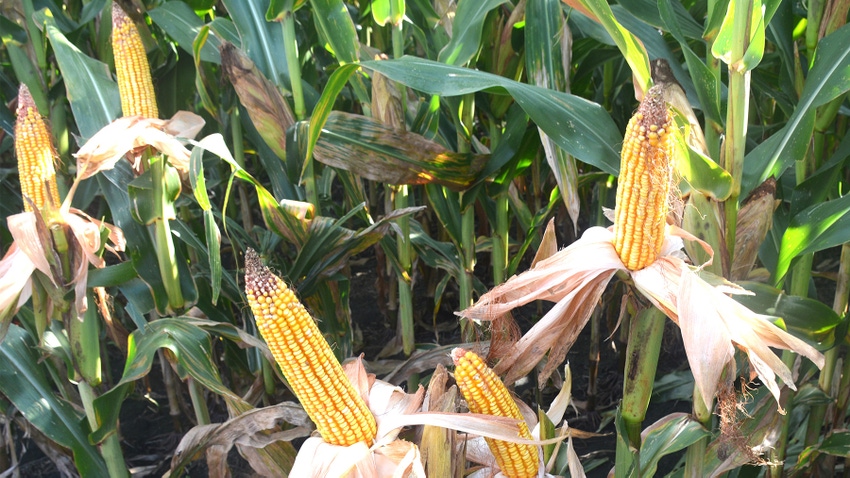
Scott Mickey encourages South Carolina corn and soybean farmers to understand and take advantage of their price objectives as they move along in the new crop year ahead.
In short, Mickey sees a “tough” year ahead for both corn and soybean prices. Prices are projected down in 2024 for both commodities.
The Food and Agricultural Policy Research Institute, or FAPRI, projects the average corn price to be $4.47 per bushel in 2024, down from the average USDA corn price of $4.85 per bushel in 2023. The average price for soybeans was $12.90 per bushel in 2023, according to USDA. FAPRI is projecting a roughly $2 price decrease per bushel to $10.94 per bushel in 2024.
Corn supply up, soybean down
Mickey, a Clemson University agricultural economist, points to generally the same supply of corn on the market in 2024 as compared to 2023. However, he says soybean supplies will be a bit tighter in 2024.
“In 2024, we’re looking at a drop of about 3 to 4 million acres in corn. If the U.S plants less than 3 million acres of corn, what’s that going to do for our supply of corn? It will go down. It’s not going down very much because expected yield in 2024, if we follow our trend line, is about seven bushels higher than what we made in 2023. We’re going to have the same corn supply in 2024 if we cut acres 3 million as we had this year,” Mickey said in a presentation at the South Carolina Corn and Soybean Growers Annual Meeting at the Santee Conference Center in Santee Dec. 14.
Citing USDA data, Mickey noted that at the beginning of 2023 U.S corn ending stocks totaled 1.3 billion bushels. “That sounds like a lot, but it is about 10% of what we normally use. As we move in 2024, we’ve got 2.1 billion bushels of ending stocks which is about 15% of our use. We are starting off with a lot more supply on hand.”
“When we increase our beginning stocks, and produce about the same amount of corn, we’re going to see a bigger supply of corn available in 2024 than we’ve had for the last three years,” Mickey said.
So, what are we going to do with all this corn?
“We do basically three things. We can feed it. We can make ethanol out of it, or we can export it. Our feed use has been pretty steady; about 5.5 billion bushels of corn get fed every year. That will be about the same for 2024. For ethanol, it’s been creeping up. We used 5.3 billion bushels in 2021. USDA is projecting 5.4 billion in 2024. In 2021, the U.S. exported in 2021 2.5 billion bushels. In 2024 we’re expecting it to be about 2.7 billion bushels,” Mickey said.
“Our feed use is pretty set. Once we know how many cattle, hogs, and chickens are on feed, we know what that number is going to be. Ethanol can change based on oil prices. Exports are going to be very price sensitive. We all want higher corn prices if we’re selling it. If we’re buying it, we want lower prices. My concern is we need to get 2.7 billion bushels exported just to keep our ending stocks from getting out of control, and to do that prices are probably going to need to stay at a level people want to buy at.”
Price outlook
FAPRI projects the average corn cash price to be $4.47 per bushel in 2024.
“That’s not the price you’re going to be getting in South Carolina necessarily. But the same trend is very likely to happen. Because that’s the average price, some of you will have the opportunity to sell above that $4.47 level. You just don’t want to be the person selling below that $4.47. You’re going to have to understand what your price objectives are and take advantage of them when those opportunities come along,” he said.
Turning to soybeans, Mickey said FAPRI projects 87 million acres of soybeans in the United States in 2024, up from 84 million acres in 2023. He said the increased acres points to increased soybean supplies.
“Our trendline yield is slightly higher than it was last year. Our total supply is going to go up potentially 300 million bushels of soybeans. If we look at our usage, crush is going to be similar, seed and residual use is going to be similar,” Mickey said.
Total exports are expected to go up only slightly in 2024. Mickey said total demand and total use for soybeans are up, but ending stocks are projected to increase about one-third from 245 million bushels to 376 million bushels.
“This is something you need to factor in as you’re making your cropping decisions and looking at how you want to allocate acres. Soybeans will see a little more volatility in prices,” Mickey said.
Read more about:
Crops Farm BusinessAbout the Author(s)
You May Also Like






